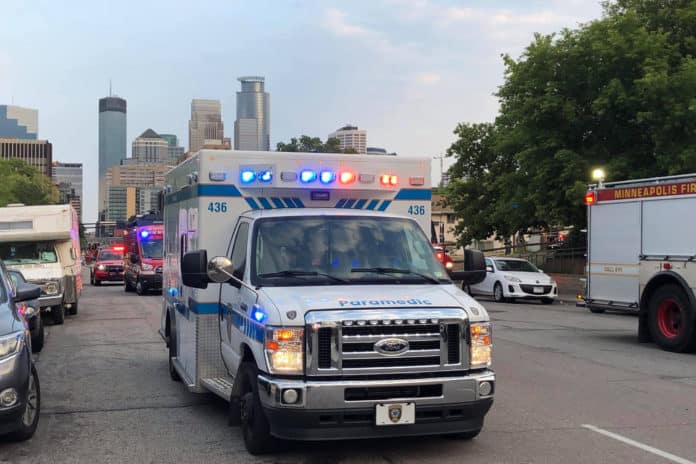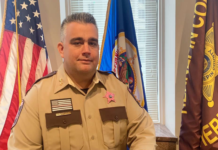
On July 4, the Minneapolis Police Department had 80 officers on duty. Between 9 p.m. and 4 a.m. dispatch handled 1300 911 calls. It was a chaotic night.
As the number of active-duty Minneapolis police officers has declined, both law enforcement and paramedics have been stretched, for they often work hand in glove.
Increasingly, emergency personnel are being required to handle every imaginable kind of problem. And the stress is taking a toll on the men and women we rely upon to help us when our hearts stop working or a baby comes a little earlier than expected.
In Hennepin County, population just north of 700,000, approximately 130 Hennepin EMS paramedics respond to more than 87,000 calls per year. Operating 24/7, anywhere from seven to 22 ambulances might be in service at any one time as they cover 266 square miles of urban and suburban communities.
Increasingly, they aren’t just helping individuals in auto accidents or transporting the elderly from assisted living to the hospital.
They may find themselves in the middle of a shootout.
Day or night, they’re dealing with people whose problems involve alcohol or drugs in some capacity, be it an accident in the home or an overdose on the street.
Crime Watch Minneapolis monitors scanners and reports on crime and public safety in Minnesota. For months, they’ve been sounding an alarm. They’ve reported on long response times; paramedics entering locations where bullets are flying; and citizens repeatedly calling for assistance.
Though they have some latitude, paramedics generally must wait for law enforcement to arrive on the scene before they step in. And so, they can find themselves in a waiting mode during which their own safety can be compromised.
Sometimes they’re the ones who are delayed.
On May 17, Crime Watch tweeted, “Police are wondering where EMS is on this stabbing. Victim is deteriorating rapidly, vomiting blood.”
Mike Trullinger has been with Hennepin EMS for more than 20 years. He currently serves as operations battalion chief and public information officer.
Across the country and around the state, staffing is a complex problem that calls for innovative solutions, Trullinger says.
But the truth is, there’s no quick fix for his two challenges: retention and recruitment.
Paramedics undergo at least a year of training. Even veterans who are hired by Hennepin EMS must go through its training program.
“It takes time to produce quality paramedics,” Trullinger says. Though you could speed it up, you’d affect quality.
Hennepin EMS is offering financial incentives for potential candidates.
It’s also implementing a pilot program where EMTs, who have less training than paramedics, would staff a jump car to handle low-acuity calls and improve paramedic response times to higher-acuity calls.
Trullinger says they do everything they can to avoid putting crews into dangerous situations.
“If it’s unsafe, we won’t go in. It does affect our response time. But we want residents to know we’ll get there and help as soon as we can, whenever we can.”
Trullinger acknowledges stress is a problem for his people, particularly on calls involving children.
The days of telling employees to “suck it up” are past, Trullinger says. “That wasn’t a good answer then; it’s not a good answer now.”
Instead, paramedics have access to counseling, peer support groups, and clergy.
Hollie Jones is taking advantage of it.
Jones became a paramedic to help people. But now she’s finding she also needs to help herself to deal with a job that’s changed dramatically since she first became a paramedic in 2004.
Jones began her career in New Orleans at a time when it was considered one of the nation’s most violent cities.
In 2008, she began working at Hennepin EMS.
During her tenure in both New Orleans and Minneapolis, she’s never felt as unsafe in her job as she does today.
Jones used to work the night shift. But several years ago, she switched from nights to days. Everyone she dealt with was either high or drunk. The stress was just too great.
It still is.
Each call presents a unique challenge. Paramedics encounter language barriers. Occasionally there’s hostility from individuals who distrust any organization that represents authority.
At her core, she’s a problem solver, Jones says, and these days, paramedics are required to be problem solvers for everything.
“We want to help; we want to try,” Jones says. “We just don’t want to get hurt doing it.”
When individuals throw rocks, bottles, and firecrackers, or discharge weapons, paramedics have limited resources to protect themselves and their vehicles.
“I don’t have a weapon,” Jones says. “I have a radio and a flashlight.”
And, she says, “I have to be alive to help people.”
She acknowledges there are good days that make it all worthwhile.
“Today people were thankful and appreciative,” Jones says. “It’s surprising when that happens because we get so much of the other.”















